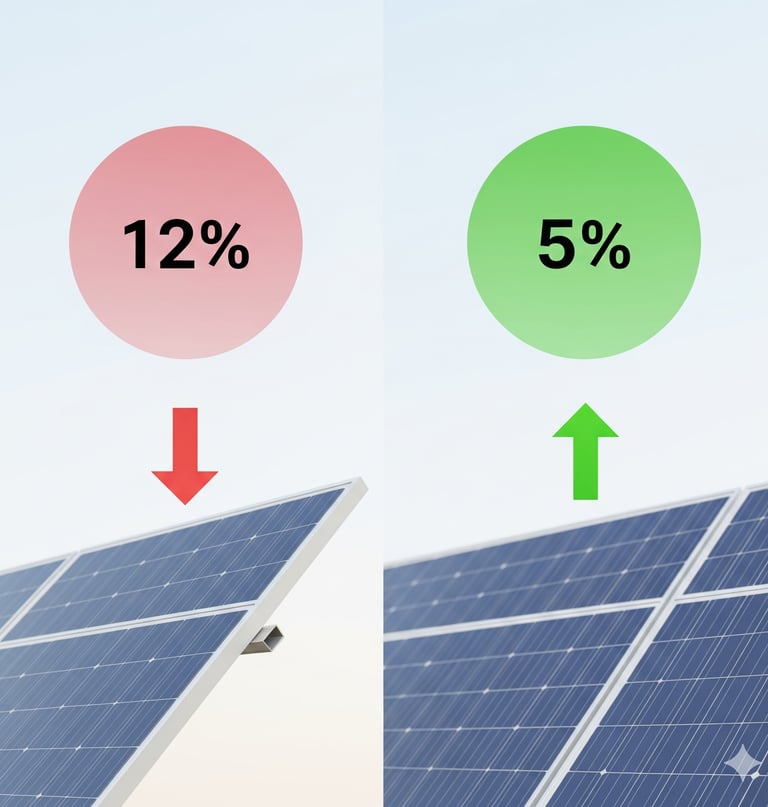Powering India's Future: Landmark GST Revision Makes Solar Energy More Accessible Than Ever
GST cut on Renewable Energy
9/4/20252 min read


In a decisive move that underscores a firm commitment to a sustainable future, the Government of India has implemented a landmark revision of the Goods and Services Tax (GST) structure for renewable energy projects. This policy shift significantly reduces the financial barrier to adopting solar power, presenting an unparalleled opportunity for homeowners, businesses, and industries across the nation.
The newly implemented uniform GST rate marks a transformative moment for the solar sector, simplifying a previously complex tax structure and accelerating the return on investment for all stakeholders.
A Simplified, Unified Tax Structure
The recent directive from the GST Council has established a clear and simplified tax framework for solar power. The update mandates a uniform GST rate of 5% on all solar energy systems.
This single rate applies comprehensively to the supply, installation, and commissioning of both grid-connected and off-grid solar projects, including Engineering, Procurement, and Construction (EPC) contracts. This clarity eliminates previous ambiguities, ensuring transparent and predictable project pricing for consumers.
Direct Benefits for Consumers and Businesses
This strategic revision delivers immediate and tangible financial advantages:
Reduced Upfront Capital Expenditure: The most significant impact is a direct reduction in the total project cost. By lowering the tax burden, the government has effectively decreased the initial investment required to transition to solar energy, making it accessible to a broader segment of the economy.
Accelerated Return on Investment (ROI): A lower initial investment directly translates to a shorter payback period. The savings generated from reduced electricity bills will now recover the system's cost in a shorter timeframe, unlocking years of virtually free electricity sooner and improving the lifetime value of the investment.
Enhanced Competitiveness for Industry: For commercial and industrial entities, this reduction is a powerful catalyst. Lowering the cost of solar adoption directly decreases operational overhead, strengthens energy security, and improves competitiveness, all while supporting corporate sustainability and ESG (Environmental, Social, and Governance) goals.
Aligning with National Green Energy Objectives
This policy initiative is widely recognized as a critical enabler for achieving India’s ambitious target of 500 GW of non-fossil fuel capacity by 2030. By improving the economic viability of solar power, the government is incentivizing widespread adoption and encouraging private investment in renewable infrastructure. This move not benefits individual consumers but also propels the nation toward energy independence and a greener economic future.
The Time to Act is Now
The revision of the GST rate is a clear signal of strong governmental support for solar energy. When combined with existing state-level subsidies and the inherent protection against rising grid electricity costs, the economic case for solar has never been more compelling.
This decision removes the last remaining hurdles for many, making the transition to clean, reliable, and cost-effective solar power the most logical financial and environmental decision one can make.
About EnergeiX:
EnergeiX under SSSOlar Agro Renewable Operations Junction LLP is a leading provider of integrated solar energy solutions, committed to empowering residential, commercial, and industrial clients with sustainable and cost-effective power. Our expertise encompasses design, engineering, procurement, and construction of high-performance solar projects tailored to meet specific energy needs and drive significant long-term savings.
